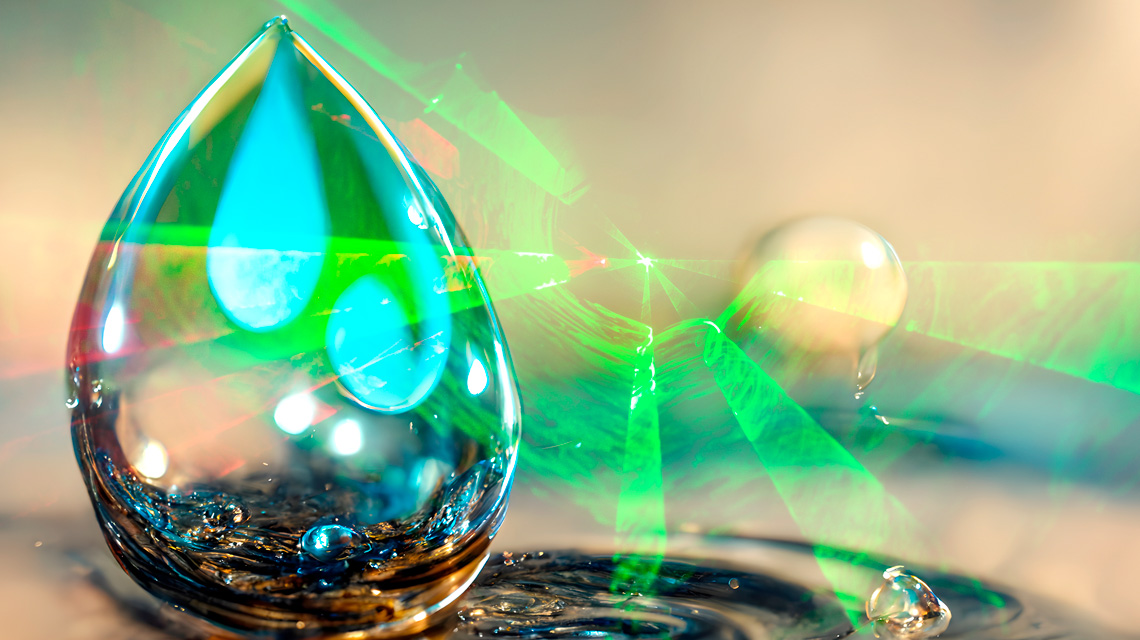Italian National Agency for New Technologies, Energy and Sustainable Economic Development

Environment: ENEA developed innovative laser system for detection of water contaminants
ENEA has developed an innovative technique based on laser Raman spectroscopy[1] for real-time detection of water contaminants, also at low concentrations. The tool, a portable laser device, was previously successfully used to detect air pollutants, which can also provide information on the chemical structure of water pollutants, thanks to the interaction of light with molecules. It’s a fast, easy, non-destructive technology and doesn’t require any sample preparation.
“We examined the most common pollutants found in rivers, lakes and reservoirs due to agricultural and industrial activities. These substances harm natural ecosystems and pose a risk to human and animal health when this water is used for irrigation in agriculture and livestock watering, so entering the food chain”, explained Salvatore Almaviva, researcher of the Diagnostics and Metrology Laboratory at the ENEA Frascati Research Center and co-author of the study published in the international journal Sensors, jointly with Florinda Artuso, Isabella Giardina and Alessandra Pasquo at the Antonia Lai Agency.
Raman spectroscopy proved especially effective in detecting concentration levels of nitrates up to 20 milligrams per litre, i.e. below the legal limits (50 mg/l), while for sulphites within the threshold value was of 500 mg/litre L. A high content of nitrates in drinking water presents risks to humans: these substances, once ingested, can turn into nitrites, causing, for example, the so-called "blue baby syndrome," due to a reduced capacity of hemoglobin to carry oxygen. Furthermore, nitrate intake, linked to the formation of nitrosamines, some of the most potent known carcinogens in mammals, has a potential role in the development of digestive tract tumors.
“In our study we explored sodium sulphite, widely used in the textile industry as a bleaching and desulphurizing agent and to dechlorinate swimming pools.
Excessive intake of these toxic substances can cause damage to health, ranging from migraine and asthma up to more serious illnesses. They also contribute to higher acidification of rain by reacting with water”, pointed out Almaviva.
The ENEA team also conducted tests for the presence of other anthropic pollution indicators, like coliform bacteria, which could proliferate in waters used in agriculture; glyphosate and other air pollutants from automobile exhaust, which can enter water bodies primarily through land deposition; phosphates, which get into water through detergents (from domestic waste), fertilizers and agricultural pesticides. An excessive amount of phosphates can lead to the formation of fresh-water algal blooms (known as "eutrophication") which release toxins like microcystins. The prevalence and duration of algal blooms causes hypoxia, or oxygen depletion, and the consequent death of flora and fauna.
"Our investigation technique has proven to be successfull in 'hunting down' nitrates and sulphites, while further optimization studies and improved sensitivity are needed for phosphates. Our findings so far encourage us to continue not only in environmental and water resources monitoring but also in other areas like food quality and safety and security to detect CBRNe threats[2].
Its rapidity and usability help us to perform analyses and its compactness and easy handling to conduct in-situ measurements”, concluded the ENEA researcher Antonia Lai.
